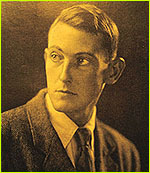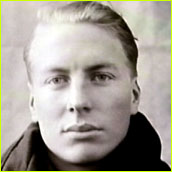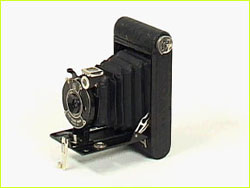 |

|

|
The Mystery of Mallory & Irvine '24
By Liesl Clark and Audrey Salkeld
"The question remains, 'Has Mount Everest been climbed?' It must be left unanswered, for there is no direct evidence. But bearing in mind all the circumstances I have set out.... considering their position when last seen, I think myself there is a strong probability that Mallory and Irvine succeeded."
Noel Odell, in The Fight for Everest 1924
 The North Face of Everest from Base Camp, 1924.
The North Face of Everest from Base Camp, 1924.
|
|
By the mid 1920s the farthest corners of the Earth had already been explored:
the North and South Poles had been reached, the sources of the world's major
rivers had been discovered. All that remained to be claimed was the "Third Pole,"
the summit of the highest mountain on Earth, Mount Everest. In 1924 a British
expedition was poised to make that claim. At the time of their first Everest
attempt, in 1921, no climber had ventured above 24,600 feet. It was unclear
whether climbers could go higher and still survive, and whether supplemental
oxygen would help. Each step higher on Everest was new territory, the
physiological unknown, and in June of 1924, two climbers were in position at
their high camp on the mountain, ready to make a bid for the summit.
Thirty-eight year old George Leigh Mallory
had been on the two previous British expeditions to Everest in the 1920s.
He was celebrated as one of Britain's ablest rock climbers, and he had proven
himself as a strong high-altitude climber on the Everest expeditions of 1921 and 1922.
Andrew "Sandy" Irvine,
only 22 at the time, had no Himalayan or high-altitude climbing experience. But he was
adept at repairing the controversial oxygen apparatus used by the British climbers
at high elevations. The local Tibetans and Sherpas laughed at the strange bottles
containing what they referred to as "English Air."
|  George Leigh Mallory
George Leigh Mallory
|
On earlier attempts, Mallory had felt instinctively that to use oxygen bottles to
assist breathing in the thin air was somehow unsporting. On this third expedition,
Mallory was coming around to the idea that without such artificial aid, Everest
would never be climbed. And to Mallory, Irvine would be his ticket to success at
the summit of Everest, for Irvine could take apart and rebuild the unreliable rigs
that were used in their day. Irvine had fabricated an apparatus he called "Mark V."
Even though he had succeeded in removing five pounds from the regularly issued version,
his revised oxygen rig still weighed about 30 pounds. Moreover, the oxygen tanks were
notoriously unreliable, and 38 of them that year were found to have leaks.
 Andrew "Sandy" Irvine
Andrew "Sandy" Irvine
|
|
After two attempts without using supplemental oxygen had failed to take the expedition higher
than around 28,125 feet, Mallory decided on one more all-out assault using the controversial
gas. On the morning of June 6, having breakfasted on a fry of tinned sardines, George Mallory
and young Sandy Irvine set off from the top of the North Col at 23,100 feet, hoping to reach
the summit three days later. They passed Howard Somervell,
who loaned his camera to Mallory.
Somervell was said not to be surprised, as Mallory was notoriously forgetful.
Mallory and Irvine were last spotted, through mist, in the early afternoon of June 8 by
geologist Noel Odell, who was following behind in support. He saw two black figures -
no more than dots - approach and climb a rock step, called the Second Step, on the mountain's
skyline, "nearing the base of the summit pyramid." To Odell, they seemed to be going strong and,
although lower than he expected, he felt sure they should make it to the summit. Then clouds swirled
in once more and Odell's tantalizing vision was lost forever.
|  Mallory's note, written before leaving camp VI, tells the photographer Captain John Noel where to look for him.
Mallory's note, written before leaving camp VI, tells the photographer Captain John Noel where to look for him.
|
Shortly afterwards a sudden snow squall plastered the upper slopes with a thin layer of new snow.
Upon arriving at the high camp, Odell noticed hardware from the oxygen apparatus strewn inside
Mallory and Irvine's tent. It seems Irvine was hard at work, making final adjustments to their
oxygen canisters before their departure for the summit. Could this have resulted in their leaving
too late for their summit bid? Odell retreated to the North Col but kept watch all night for
signs of life above him. There were none, and when two days later Odell began the long climb back
up to Mallory and Irvine's last camp, it was with no great hope of finding his comrades. No one
had been back to the tent. The expedition had to accept that Mallory and Irvine were lost.
A few conflicting clues were found by later climbers:
 This ice axe, believed to be Sandy Irvine's, is one of the only pieces of material evidence in the case of the climbers' disappearance.
This ice axe, believed to be Sandy Irvine's, is one of the only pieces of material evidence in the case of the climbers' disappearance.
|
|
1. In 1933, an ice axe was found on the route at 27,750 feet. It had three nick marks on
it which was the characteristic mark Irvine was known to have put on some of his belongings.
2. Mallory's route was eventually completed by a Chinese expedition in 1960, but although
hundreds of climbers have been to the North Face and Northeast Ridge of Everest in recent years,
it is still not known whether Mallory and Irvine could have climbed the Second Step, a rock outcrop,
that by today's standards would be a very difficult climb without the aid of fixed ropes, anchors,
or a ladder which is used by climbers today. The Chinese climbers in 1960 reportedly had to stand
on each other's shoulders with their boots off, resulting in frostbite and the loss of toes.
3. Finally, in 1975 a body was found 750 feet directly below the ice axe by a Chinese climber who
reported in his broken English that the climber was an "English dead." When he touched the clothes
of the dead climber, the fabric disintegrated in his fingers, indicating that the climber had been
there many years. Could this be the body of Irvine, who fell from the spot where his ice axe was
found? Lying at 27,000 feet, this last piece of evidence has brought a team of mountaineers to
Everest to climb to the site where the body was reportedly found.
To this day no one knows what happened to George Mallory and Sandy Irvine. Nor do we know if
they trod the summit snows almost thirty years ahead of
Edmund Hillary and Sherpa Tenzing Norgay,
but their names live on in Everest legend. For example, when remains of Mallory's camp were found in
the thirties, a working torch was among the debris, which also included emergency flares. Had Mallory's
forgetfulness left him without the means to signal to his comrades below that he and Irvine were
struggling for their lives high on the mountain? Sommervell's camera, loaned to Mallory, still
lies high on Everest's slopes. If found, the images inside may reveal whether they made it to the
summit or died in their valiant attempt to be the first to stand on top of the world.
Follow us as we try to uncover the mysteries surrounding Mallory and Irvine's disappearance.
Mallory |
Irvine |
Somervell |
Breashears on Mallory & Irvine |
Voices from the Past
Photos: (1) Courtesy of the John Noel Photographic Collection;
(2,3) Salkeld Collection;
(4) Courtesy of the John Noel Photographic Collection;
(5) Courtesy of The Alpine Club.
Lost on Everest |
High Exposure |
Climb |
History & Culture |
Earth, Wind, & Ice
E-mail |
Previous Expeditions |
Resources |
Site Map |
Everest Home
Editor's Picks |
Previous Sites |
Join Us/E-mail |
TV/Web Schedule
About NOVA |
Teachers |
Site Map |
Shop |
Jobs |
Search |
To print
PBS Online |
NOVA Online |
WGBH
© | Updated November 2000
|
|
|




 The North Face of Everest from Base Camp, 1924.
The North Face of Everest from Base Camp, 1924.
 George Leigh Mallory
George Leigh Mallory
 Andrew "Sandy" Irvine
Andrew "Sandy" Irvine
 Mallory's note, written before leaving camp VI, tells the photographer Captain John Noel where to look for him.
Mallory's note, written before leaving camp VI, tells the photographer Captain John Noel where to look for him.
 This ice axe, believed to be Sandy Irvine's, is one of the only pieces of material evidence in the case of the climbers' disappearance.
This ice axe, believed to be Sandy Irvine's, is one of the only pieces of material evidence in the case of the climbers' disappearance.
 Kodak Vestpocket
Kodak Vestpocket